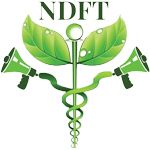
Interview With Dr. Zach Bush – SARS CoV2 – ACE2 Receptors
“SARS-CoV-2 is a close cousin to SARS, and uses the same human receptor,
ACE2,” reports Farzan, who is now co-chair of the department of immunology and microbiology at Scripps Research. The ACE2 receptor is expressed almost exclusively in the lungs, gastrointestinal tract, and the kidneys, which explains why the disease is so effectively transmitted via both the respiratory and fecaloral routes.” (Source: Harvard Magazine)
What are some common denominators in this age group?
- Many elderly people in the 60+ age range are taking drugs for
cardiovascular issues and diabetes that include Statins & Ace
Inhibitors. - In the last year many elderly in our nursing / old age homes / long
term care homes have received a new High Dose Influenza Vaccine
(Flu Shot) with up to 4x the Antigens compared with a regular flu
shot.
Why are those two points above important to high presentation of COVID 19 in the elderly and the resulting high rate of death in this age
group? Dr. Zach Bush alleges that both the Statin / Ace Inhibitors and the Influenza Vaccines make a person more susceptible to infection from the SARS CoV2 virus and it’s presenting disease COVID 19. Watch and decide for yourself.
From Wikipedia
ACE 2
Angiotensin-converting enzyme 2 (ACE2) is an enzyme attached to the cell membranes of cells in the lungs, arteries, heart, kidney, and intestines. ACE2 lowers blood pressure by catalysing the hydrolysis of angiotensin II (a vasoconstrictor peptide) into angiotensin (1–7) (a vasodilator). ACE2 counters the activity of the related angiotensin-converting enzyme (ACE) by reducing the amount of angiotensin-II and increasing Ang(1-7) making it a promising drug target for treating cardiovascular diseases. ACE2 also serves as the entry point into cells for some coronaviruses, including HCoV-NL63, SARSCoV, and SARS-CoV-2. The human version of the enzyme is often referred to as hACE2.
The expression of ACE2 in cortical neurons and glia make them susceptible to a SARS-CoV-2 attack, which was the possible basis of anosmia and incidences of neurological deficits seen in COVID-19.[19] As anosmia and dysgeusia are seen early in many COVID-19 patients, it was suggested to be considered to be a heralding clue in COVID-19,[20] which subsequently was
declared as “significant symptoms” in COVID-19 by the American Academy of Otolaryngology–Head and Neck Surgery.
Coronavirus entry point
As a transmembrane protein, ACE2 serves as the main entry point into cells for some coronaviruses, including HCoV-NL63, SARS-CoV (the virus that causes SARS), and SARS-CoV-2 (the virus that causes COVID-19). More specifically, the binding of the spike S1 protein of SARSCoV and SARS-CoV-2 to the enzymatic domain of ACE2 on the surface of cells results in endocytosis and translocation of both the virus and the enzyme into endosomes located within cells. This entry process also requires priming of the S protein by the host serine protease TMPRSS2, the inhibition of which is under current investigation as a potential therapeutic. It has also been shown that disruption of S-protein glycosylation significantly impairs
viral entry, indicating an importance of glycan-protein interactions in the process. This has led some to hypothesize that decreasing the levels of ACE2, in cells, might help in fighting the infection. On the other hand, ACE2 has been shown to have a protective effect against virusinduced lung injury by increasing the production of the vasodilator angiotensin 1–7. Furthermore, according to studies conducted on mice, the interaction of the spike protein of the coronavirus with ACE2 induces a drop in the levels of ACE2 in cells through internalization and degradation of the protein and hence may contribute to lung damage. Both ACE inhibitors and angiotensin II receptor blockers (ARBs) that are used to treat high blood pressure have been shown in rodent studies to upregulate ACE2 expression hence may affect the severity of coronavirus infections. A systematic review and meta-analysis published on July 11, 2012, found that “use of ACE inhibitors was associated with a significant 34% reduction in risk of pneumonia compared with controls.” Moreover, “the risk of pneumonia was also reduced in patients treated with ACE inhibitors who were at higher risk of pneumonia, in particular those with stroke and heart failure. Use of ACE inhibitors was also associated with a reduction in pneumonia related mortality, although the results were less robust than for overall risk of pneumonia.” An April 2020 study of patients hospitalized in Hubei Province in China found a death rate of 3.7% for hospitalized patients who had hypertension and were on Angiotensin Converting Enzyme inhibitors or Angiotensin Receptor Blockers versus 9.8% for hospitalized patients with hypertension not on such drugs, suggesting that the drugs are not harmful and may help against the coronavirus. Despite lack of conclusive evidence, some have advocated for and others for the cessation of ACE inhibitor or ARB treatment in COVID-19 patients with hypertension.However, multiple professional societies and regulatory bodies have recommended continuing standard ACE inhibitor and ARB therapy. An in vitro study focused on the early stages of infection found that clinical grade human recombinant soluble ACE2 (hrsACE2) reduced SARS-CoV-2 recovery from vero cells by a factor of 1,000-5,000.

